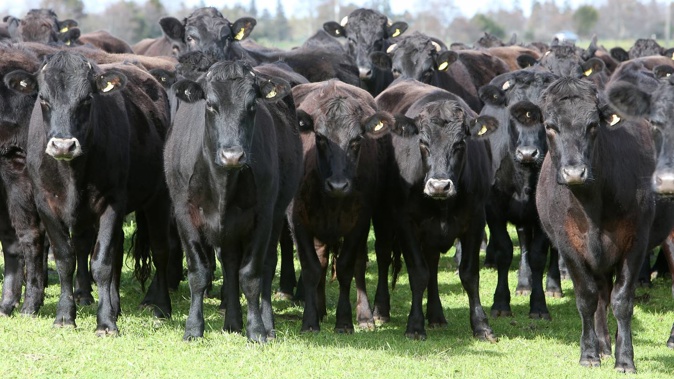
An agriculture emissions pricing system will likely disproportionately disadvantage Māori landowners with flow-on effects for Māori more broadly, says a report to Cabinet on a proposed pricing scheme.
The paper from government officials said the likely disadvantage to Māori, who own more than $16 billion of farming assets and employ more than 19,000 people in the agriculture sectors, would be more pronounced if there was no assistance introduced to mitigate some of the impacts.
The paper was released this week along with the Government's proposal for a pricing system for agricultural emissions, which is open for consultation until mid-November.
"An emissions pricing system is likely to disproportionately disadvantage Māori landowners with flow-on effects for Māori more broadly, particularly if there is no assistance in place to mitigate some of the impacts," it said.
Draft modelling had shown that the price of methane emissions would drive land-use change, which in turn would drive emissions reductions.
"Most of this land-use change will likely occur in the sheep and beef sector. Changes in land-use in the sheep and beef sector will impact the Māori economy due to the large proportion of sheep and beef assets and could potentially impact employment of Māori in the meat processing workforce, where 28 per cent of the workforce identify as Māori."
The paper said Māori played a significant part in the primary sector.
Māori owned an estimated 1.51 million hectares of land, and Māori landowners had a substantial primary sector asset base including $8.6b in sheep and beef farming, $4.9b in dairy farming and $2.6b in other forms of agriculture, including horticulture.
"The Government is considering feedback from Māori in the development of pricing system."
"Potential options to alleviate disproportionate impacts of an emissions-pricing system have been proposed, including ringfencing revenue to support Māori landowners and agribusinesses and recognising sequestration.
- Landmark climate change breakthrough: Farmers agree to emissions pricing
- Agriculture emissions set to be top of agenda at meeting of environment ministers
- Agriculture Minister maintains New Zealand farmers 'will adapt' to agriculture emissions tax
"These mitigations have been informed by earlier engagement with Māori and the input of the Federation of Māori Authorities in the partnership [the He Waka Eke Noa primary sector climate action partnership]."
Te Pati Māori Party climate change spokesperson Debbie Ngarewa-Packer said the party had consistently called for "transformative action on the highest climate polluting sector, intensive dairy".
"This plan fails to do that. Our policy is to immediately price methane emissions under the ETS, set limits on stocking levels, and phase out synthetic nitrogen fertilisers, while also requiring manufacturers and importers of synthetic nitrogen fertiliser to pay for emissions under the ETS (emissions trading scheme).
"Rather than advantaging intensive dairy – and disadvantaging less polluting Māori-owned beef and sheep farms, as this plan does - we would establish a $300m Mātai Ahuwhenua innovation and support fund to incentivise farmers, particularly Māori farmers, to transition to regenerative and value-add farming."
The paper said it was estimated Māori operated up to 25 per cent of New Zealand sheep and beef farmland.
"A high methane price would therefore likely significantly and disproportionately impact Māori sheep and beef farmers.
"This is due to: the structural barriers to developing whenua Māori; limited access to capital and advice; less productive land use capability; the limited emissions mitigation options available to sheep and beef farmers, compared to dairy farmers."
These factors would likely impact Māori landowners' ability to respond to an emissions pricing policy, the paper said.
"Land-use changes resulting from an emissions pricing policy are also likely to have a flow-on effect on the Māori economy and communities. For example, approximately 28 per cent of the meat processing workforce are Māori.
"Any reduction in Aotearoa's New Zealand sheep and beef sector has the potential to disproportionately impact Māori employment.
"Some respondents to Federation of Māori Authorities engagement considered that a farm-level levy is the only viable option that would recognise the kaitiakitanga role of manua whenua."
More generally, the paper commented that pricing of agriculture emissions would likely lead to "significant" change in farming practices in New Zealand.
This would present both challenges and opportunities to rural communities, it said.
Potential challenges could include "a change in spending power across rural communities and of quality of life".
Potential opportunities could include new jobs and retraining opportunities arising from alternative land uses.
Agriculture accounts for nearly half of New Zealand's gross greenhouse gas emissions, the Government says, mainly come through methane – burped out by ruminant livestock like cattle, sheep and deer – but also from nitrous oxide, from sources like fertiliser and cow urine.
Environmentalists have for years pushed for the sector to be pulled into the Emissions Trading Scheme (ETS), where it would pay for its emissions through units, as other polluting industries do.
The Government has proposed separate levy prices for long-lived gases and biogenic methane, in line with the "split-gas" approach it's taken under its Zero Carbon Act.
Introducing these new levies, it says, would be enough to meet its target of bringing biogenic methane emissions down to 10 per cent below 2017 levels by 2030 (later to be scaled up to a 24 to 47 per cent reduction by 2050).
While long-lived gas prices will be set annually and linked to that of New Zealand Units within the ETS, these would be discounted and phased down over time.
The levy price for biogenic methane, meanwhile, would be a unique one based on progress toward domestic methane targets – and the Government is consulting on whether this should be reviewed every three years.
The proposal however said a final decision on pricing would be informed by advice from the Climate Change Commission and set following consultation with iwi, Māori and the agriculture sector itself.
Take your Radio, Podcasts and Music with you









